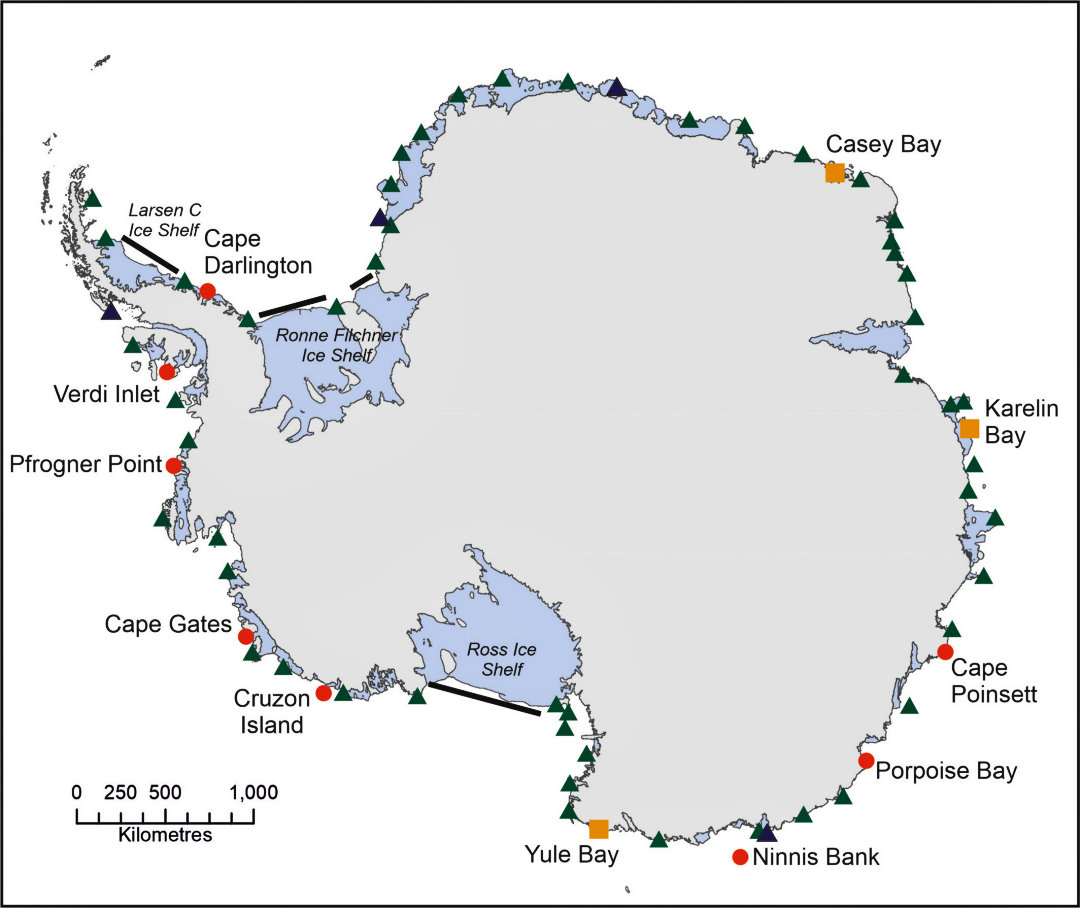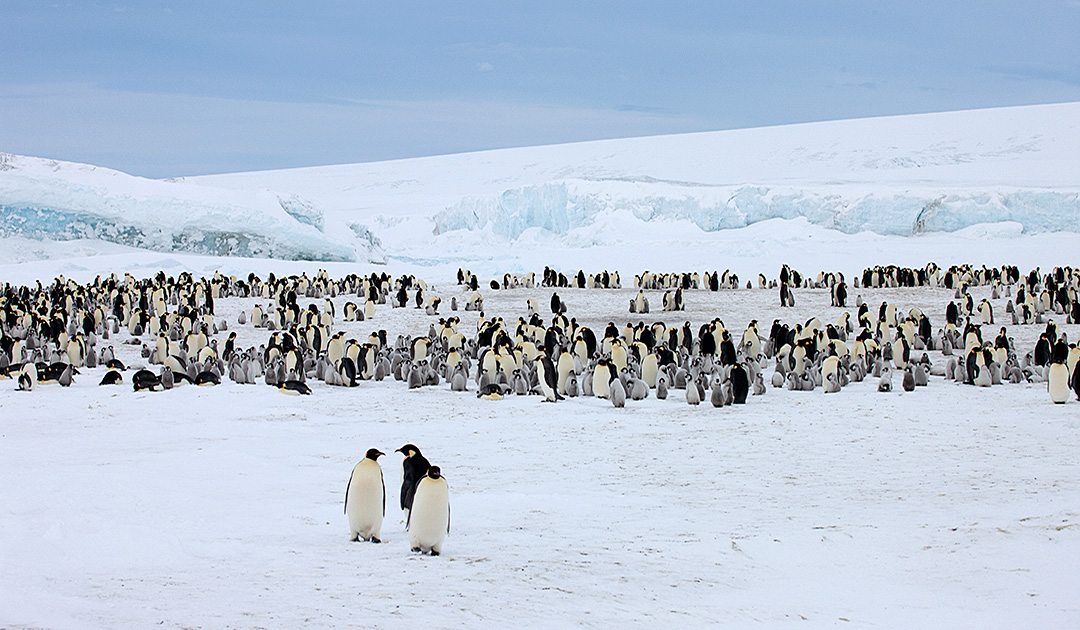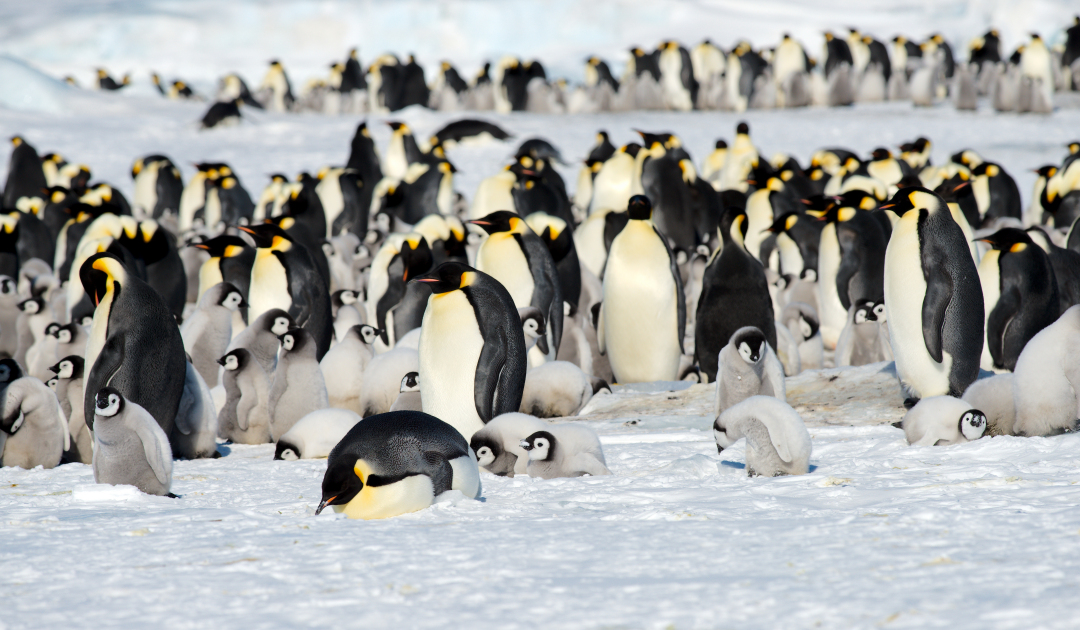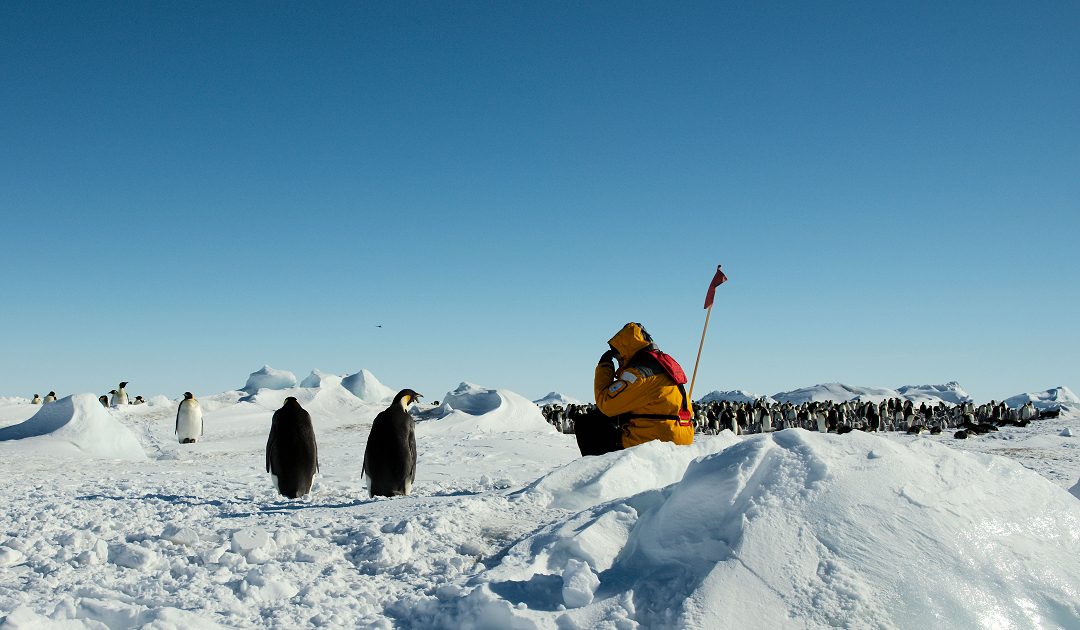
The view from above often helps to see things more clearly and to get a better overview. This is especially true in the vast expanses of Antarctica. That’s why scientists resort to the help of satellites that repeatedly fly over the region. This allows researchers to make sensational discoveries, as the British Antarctic Survey has just done with the discovery of a previously unknown colony of emperor penguins.
Researchers have discovered a colony of emperor penguins comprising around 500 animals on satellite images. The images came from the Worldview-3 satellite of the Maxar Technologies company and were analyzed by scientists as part of the “Wildlife from Space” project. This brings the number of known emperor penguin colonies around Antarctica to 66, about half of which are the result of discoveries made through satellite imagery. “This is an exciting discovery. The new satellite images of Antarctica’s coastline have enabled us to find many new colonies.,” explains Dr. Peter Fretwell, the project’s manager at the British Antarctic Survey.



The newly discovered colony is located on the coast of West Antarctica to the Amundsen Sea at a site called Verleger Point. In the photographs, the characteristic brown spots caused by penguin guano are clearly visible. As in most cases, there were no research teams on site yet, but the situation was confirmed exclusively by the satellite images, which had already been taken in mid-October 2021. Because the area is enclosed by a pack ice belt for a long time and emperor penguins live on fast ice close to the coast of Antarctica, reaching the colony for confirmation is very difficult and costly. However, since emperor penguins are basically faithful to the location of their colonies and only do not return when situations are unfavorable, the colony should still be found there.
While this is good news, like many of the recently discovered sites, this colony is small and located in a region badly affected by recent sea ice loss.
Dr. Peter Fretwell, BAS Project Manager “Wlidlife from Space”.
But it is uncertain, because the region is strongly affected by the loss of sea ice. That’s what Dr. Peter Fretwell is worried about, too. “While this is good news, like many of the recently discovered sites, this colony is small and located in a region badly affected by recent sea ice loss.” According to recent estimates, further loss of pack and fast ice, the substrate on which emperor penguins establish their breeding colonies each year, could eliminate about 90 percent of all colonies by 2100.

The “Wildlife from Space” project aims to identify animal aggregations such as penguin colonies in Antarctica or walrus resting places in the Arctic with the help of satellite images. Because in the vastness of the polar regions it is difficult to get an overview of the whereabouts. High-altitude imagery can help, and the Copernicus Sentinel-2 satellite mission has been supporting this approach in Antarctica since 2016, when the Scientific Committee for Antarctic Research SCAR asked the EU-led mission for help. The Wildlife from Space project, initiated by WWF UK and the British Antarctic Survey and supported by the UK Research Council, is particularly supplied by Maxar Technologies with high-resolution satellite imagery acquired by its Worldview-3 satellites. The company not only helps in Antarctica, but also provides images from the Arctic for the “Walrus from Space” project operated by BAS.
Dr Michael Wenger, PolarJournal
ON OUR OWN BEHALF


Reaching emperor penguin colonies is a challenge, as the animals breed close to the continent on fast ice from May to November/December, after which they forage in the vastness of the Southern Ocean. All these factors make it difficult for research teams to observe the animals in the field. That’s why they are increasingly turning to technical aids such as drones, robots and satellites. For tourists in Antarctica, too, visiting a colony of these iconic birds would be a dream come true. The most suitable place for this is the northernmost colony at Snow Hill Island, which was discovered in 2004 by Quark Expeditions, which now plans to make two trips there again this year, one of them with us for German-speaking travelers.
Together with our partners from Ice Expeditions and Nordic Expeditions, we offer a 17-day trip complete with flights, hotel accommodations and us as experts. The voyage is operated by Quark Expeditions aboard their expedition vessel Ultramarine, perfectly equipped for the purpose, with the two best helicopters available. If you want to know more, you can find all the necessary information on our information page (link below).
Link to the information page “Journey to the emperors of Snow Hill”.
More on the topic





